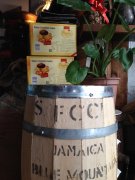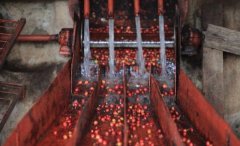What effect does the wet planing of Indonesian coffee beans have on Manning? Why did Manning use wet planing?

Professional coffee knowledge exchange more coffee bean information please follow the coffee workshop (Wechat official account cafe_style)
The four most common processing methods of Brazilian coffee
Wet planing (Wet-Hulling), that is, when the raw beans are half-dried and the moisture content is as high as 30% Murray 50%, the seed shells are removed first, and then continue to be dried in order to solve the dilemma of drying for too long. In this way, because the drying time is shortened to two to four days, the fermentation period of coffee beans is shortened, and the acidity decreases a lot, but the relative thickness increases, with obvious aromas of caramel and fruit, and even with aromas of herbs or herbs and wood. this is a unique regional fragrance of Sumatra.
However, the effect of early removal of the seed shell is that the raw beans are half dry without the last two layers of protection (note: coffee beans' four layers of protection: pericarp, pectin, seed shell, silver skin), which is like taking off your clothes and basking in the sun. Although the wet planing method solves the problem of drying time, the relative probability of raw beans contaminated by molds, fungi and yeasts is also greatly increased. But paradoxically, these factors have become the key factors in creating Manning's special aroma.
Another feature of the wet planing method is the increase in the probability of the so-called "sheep's hoof beans". Because the raw beans are planted with a shell planer in the semi-soft stage when they are still very wet, the fragile soft wet raw beans are very easily cracked, broken or scratched by mechanical force, resulting in the so-called sheep's foot beans and scratched beans, resulting in the deterioration of the selling phase of raw beans.
[wet plane Wet-Hulling]
Wet planing (Giling Basah) is a unique treatment method of water washing system in Indonesia.
Peel and pulp of ▶
▶ is dried with pectin until the moisture content is about 40, and the parchment is removed directly by machine.
[compare Comparison of Processing Method with different processing methods]
The influence of ▼ on Environment
Effect of ▼ on Flavor
.
Important Notice :
前街咖啡 FrontStreet Coffee has moved to new addredd:
FrontStreet Coffee Address: 315,Donghua East Road,GuangZhou
Tel:020 38364473
- Prev

What is the method of handling Blue Mountain Coffee? Only washed Blue Mountain Coffee is really Blue Mountain Coffee!
Professional coffee knowledge exchange more coffee bean information Please pay attention to the coffee workshop (Wechat official account cafe_style) the four most common treatment methods for Brazilian coffee since the start of cultivation in the Blue Mountains of Jamaica, has been adhering to a fully washed treatment. At this point, Jamaicans are so smart that they will never treat the fresh fruits of Blue Mountain coffee in different ways, which will also buy for teeth.
- Next

What are the differences in the way you drink coffee with different treatments? Effect of Coffee treatment on brewing
Professional coffee knowledge exchange more coffee bean information Please follow the coffee workshop (Wechat official account cafe_style) Coffee raw beans, which are not directly roasted and drunk after being picked from trees, need to go through many steps to have a good flavor. It is often thought that the flavor of coffee depends on the variety, planting environment and mode of production, but it is not.
Related
- What is the meaning of lactic acid fermentation with coffee bean treatment?
- How to judge the state of foam by sound?
- How does the latte pull out the unicorn pattern? Come to get for a little trick to improve the flower pull!
- Will flower pulling affect the taste of the latte?
- Do you know the history of coffee?
- The difference between honey treatment and sun washing what is raisin honey treatment?
- What kind of milk can a novice use to make coffee foam to keep the foam longer? The correct method and skills of milking tutorial sharing
- Why do washed coffee beans taste sour? Flavor characteristics of washed Coffee
- Introduction to the skill of how to practice the size and height of water injection around the circle of hand-brewed coffee
- How do beginners practice coffee flower drawing from scratch?

